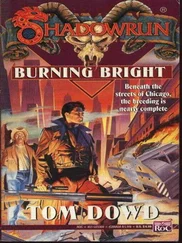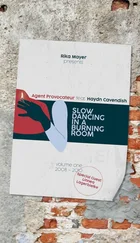At the zoo the next day, the woman in the admission booth gives Ruth a map, marking Dr. Timrod’s office with an X.
“You’ll have to go through part of the zoo, so here’s a pass,” the woman says, “just in case someone asks.”
Ruth accepts the pass but opens her pocketbook. “I may stay a while.”
“Don’t worry about it,” the woman says and waves her in.
Ruth follows the map past the black rhino and the elephants, past the lost-and-found booth where the Broad River flows only a few yards from the concrete path. She walks over a wooden bridge and finds the office, a brick building next to the aviary.
Ruth is twenty minutes early so sits down on a nearby bench, light-headed with fatigue though she hasn’t walked more than a quarter mile, all of it downhill. On the other side of the walkway a wire-mesh cage looms large as her living room. THE ANDEAN CONDOR IS THE LARGEST FLYING BIRD IN THE WORLD. LIKE ITS AMERICAN RELATIVES, VULTUR GRYPHUS IS VOICELESS, the sign on the cage says.
The condor perches on a blunt-limbed tree, its head and neck thick with wrinkles. When the bird spreads its wings, Ruth wonders how the cage can contain it. She lowers her gaze, watches instead the people who pass in front of her. Her stomach clenches, and she realizes she hasn’t eaten since lunchtime yesterday.
She is about to go find a refreshment stand when she sees the child. A woman dressed in jeans and a blue T-shirt drags him along as if a prisoner, their wrists connected by a cord of white plastic. As they pass between her and the condor, Ruth stares intently at the blue eyes and blond hair, the pale unsmiling face. She estimates his height and weight as she fumbles with her pocketbook snap, sifts through the flyers till she finds the one she’s searching for. She looks and knows it is him. She snaps the pocketbook shut as the woman and child cross the wooden bridge.
Ruth rises to follow and the world suddenly blurs. The wire mesh of the condor’s cage wavers as if about to give way. She grips the bench with her free hand. In a few moments she regains her balance, but the woman and child are out of sight.
Ruth walks rapidly, then is running, the pocketbook slapping against her side, the flyer gripped in her hand like a sprinter’s baton. She crosses the wooden bridge and finally spots the woman and child in front of the black rhino’s enclosure.
“Call the police,” Ruth says to the teenager in the lost-and-found booth. “That child,” she says, gasping for breath as she points to the boy, “that child has been kidnapped. Hurry, they’re about to leave.”
The teenager looks at her incredulously, but he picks up the phone and asks for security. Ruth walks past the woman and child, putting herself between them and the park’s exit. She does not know what she will say or do, only that she will not let them pass by her.
But the woman and child do not try to leave, and soon Ruth sees the teenager with two gray-clad security guards, guns holstered on their hips, jogging toward her.
“There,” Ruth shouts, pointing as she walks toward the child. As Ruth and the security guards converge, the woman in the blue T-shirt and the child turn to face them.
“What is this?” the woman asks as the child clutches her leg.
“Look,” Ruth says, thrusting the flyer into the hands of the older of the two men. The security guard looks at it, then at the child.
“What is this? What are you doing?” the woman asks, her voice frantic now.
The child is whimpering, still holding the woman’s leg. The security guard looks up from the flyer.
“I don’t see the resemblance,” he says, looking at Ruth.
He hands the flyer to his partner.
“This child would be ten years old,” the younger man says.
“It’s him,” Ruth says. “I know it is.”
The older security guard looks at Ruth and then at the woman and child. He seems unsure what to do next.
“Ma’am,” he finally says to the woman, “if you could show me some ID for you and your child we can clear this up real quick.”
“You think this isn’t my child?” the woman asks, looking not at the security guards but at Ruth. “Are you insane?”
The woman shakes as she opens her purse, hands the security guard her driver’s license, photographs of her family, and two Social Security cards.
“Momma, don’t let them take me away,” the child says, clutching his mother’s knee more tightly.
The mother places her hand on her son’s head until the older security guard hands her back the cards and pictures.
“Thank you, ma’am,” he says. “I apologize for this.”
“You should apologize, all of you,” the woman says, lifting the child into her arms.
“I’m so sorry,” Ruth says, but the woman has already turned and is walking toward the exit.
The older security guard speaks into a walkie-talkie.
“I was so sure,” she says to the younger man.
“Yes, ma’am,” the security guard replies, not meeting her eyes.
Ruth debates whether to meet her appointment or go home. She finally starts walking toward Dr. Timrod’s office, for no better reason than it is downhill, easier.
When she knocks on the door, the voice she heard on the phone tells her to come in. Dr. Timrod sits at a big wooden desk. Besides a computer and telephone, there’s nothing on the desk except some papers and a coffee cup filled with pens and pencils. A bookshelf is behind him, the volumes on it thick, some leather bound. The walls are bare except for a framed painting of long-tailed birds perched on a tree limb, their yellow heads and green bodies brightening the tree like Christmas ornaments, Carolina Paroquet emblazoned at the bottom.
Dr. Timrod’s youth surprises her. Ruth had expected gray hair, bifocals, and a rumpled suit, not jeans and a flannel shirt, a face unlined as a teenager’s. A styrofoam cup fills his right hand.
“Ms. Lealand, I presume.”
“Yes,” she says, surprised he remembers her name.
He motions for her to sit down.
“Our jaguar hunt cost me a good bit of sleep last night,” he says.
“I didn’t sleep much myself,” Ruth says. “I’m sorry you didn’t either.”
“Don’t be. Among other things I found out jaguars tend to be nocturnal. To study a creature it’s best to adapt to its habits.”
Dr. Timrod sips from the cup. Ruth smells the coffee and again feels the emptiness in her stomach.
“I talked to Leslie Winters yesterday before I left. She’d never heard of jaguars being in South Carolina, but she reminded me that her main focus is elephants, not cats. I called a friend who’s doing fieldwork on jaguars in Arizona. He told me there’s as much chance of a jaguar having been in South Carolina as a polar bear.”
“So they were never here,” Ruth says, and she wonders if there is anything left inside her mind she can believe.
“I’d say that’s still debatable. When I got home last night, I did some searching on the computer. A number of sources said their range once included the Southeast. Several mentioned Florida and Louisiana, a few Mississippi and Alabama.”
Dr. Timrod pauses and lifts a piece of paper off his desk.
“Then I found this.”
He stands up and hands the paper to Ruth. The words Florida, Georgia, and South Carolina are underlined.
“What’s strange is the source is a book published in the early sixties,” Dr. Timrod says. “Not a more contemporary source.”
“So people just forgot they were here,” Ruth says.
“Well, it’s not like I did an exhaustive search,” Dr. Timrod says. “And the book that page came from could be wrong. Like I said, it’s not an updated source.”
“I believe they were here,” Ruth says.
Читать дальше












